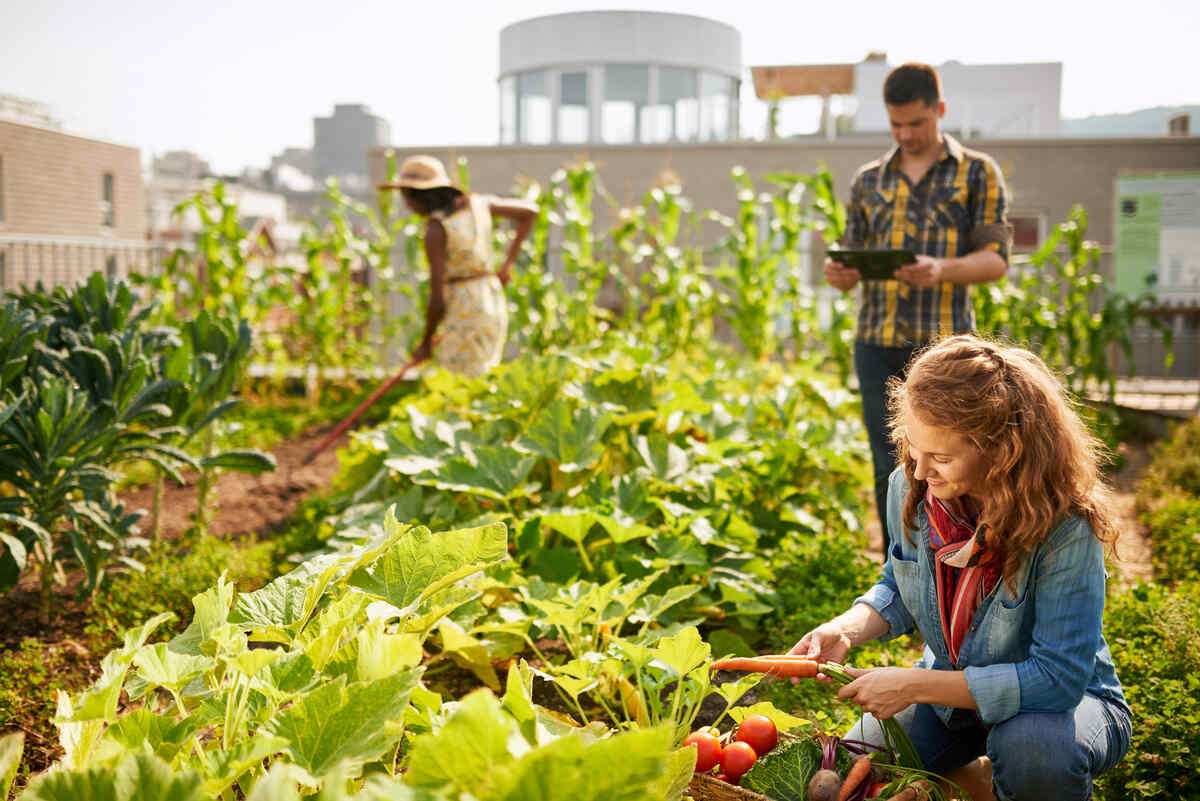The Single Strategy To Use For City Blooming
6 Easy Facts About City Blooming Shown
Table of ContentsAll about City BloomingCity Blooming Fundamentals ExplainedSome Known Factual Statements About City Blooming About City BloomingLittle Known Facts About City Blooming.
Intrigued in growing food offer for sale in the City of Chicago? Considering beginning a community garden? Changes to the Chicago Zoning Statute permit agricultural uses like community yards and urban farms in lots of components of the city. Below is a checklist of regularly asked questions concerning the regulations and guidelines that cultivators need to take into consideration when planning an urban agriculture task.
The zoning change does not customize any kind of various other codes managing composting, structure licenses, acquiring or renting City had home, organization licenses or environmental contamination. There are existing codes that control these concerns and they continue to be in full impact and may be suitable to your project. Neighborhood yards are typically owned or managed by public entities, public companies or community-based companies and maintained by volunteers.
Urban ranches grow food that is meant to be sold, either on a nonprofit or for-profit basis. Because of their commercial purpose, urban ranches need an organization permit. Yes. A neighborhood yard is permitted to sell excess create that was grown on website if the sales are accessory or subservient to the garden's main objective defined over.
Facts About City Blooming Uncovered
Composting is permitted yet only for plant material that is produced and used on website. The quantity of compost product can not go beyond 25 cubic yards at any kind of given time according to the criteria in 7-28-715 of the City's Municipal Code. Yes. Since the dirt at many new yard sites requires modifying, compost, dirt, wood chips, or various other products can be acquired to create or boost the growing area - fruit and vegtables.

If a building license is called for after that the hoophouse will be considered an accessory structure. You can figure out more regarding the structure authorization needs by getting in touch with the Department of Buildings. The 25,000-square-foot dimension restriction is planned to stop a solitary neighborhood garden from controling an offered block or interfering with the block's existing domestic or industrial personality.
The restriction does not use to yards situated in Public Open Room (POS) areas. Can there be even more than one community garden that is 25,000 square feet on a single block? Yes. The dimension limit relates to specific yards, not to individual blocks. No. Fencing is not called for, nonetheless, yards that have large car parking areas might be required to mount fence or various other landscaping features.
More About City Blooming
B1 & B2 areas require that all business usage tasks be carried out inside. Is fencing required for city ranches? Fencings may be needed, along with landscape design and testing, for specific vehicle parking areas and outside work or storage space areas depending on location and the details activity taking location.
Yes. Urban farms need building permits and zoning authorizations prior to construction. Other kinds of city testimonial might be called for depending on specific frameworks, activities, dimension, landscape design, licensing, public health and stormwater monitoring issues. A lot of these requirements are determined in the task design or allowing procedure, nevertheless, the candidate might be accountable to separately determine certain licenses or allows that might be needed.
The Department of Business Affairs and Customer Protection can help identify the certain type of service certificate that's required. Off street auto parking is needed for many business tasks in Chicago. The required number of car park spaces is based on the number of workers functioning on site and not the square footage of the growing space.
The Only Guide for City Blooming

Yes. A city ranch can offer compost material created on site, nonetheless, the operation needs to abide by the regulations in 7-28-715 of the Chicago Municipal Code. Yes. Aquaponic systems are allowed inside your home on city farms in lots of zoning areas. However, a zoning testimonial and structure permit is needed in order to set up structures or systems and a service certificate is required as explained above.
As much as 5 hives or swarms of honey bees may be kept as an accessory usage. Beekeepers must register with the Illinois Department of Agriculture. To learn more regarding the suggested zoning change you may get in touch with the Division of Housing and Economic Advancement, Bureau of Preparation and Zoning at 312.744.8563.
Farming in cities and city areas A metropolitan ranch in Chicago. Urban farming describes different methods of growing. https://www.quora.com/profile/Daniel-Nold-6, handling, and distributing food in metropolitan locations. The term likewise uses to the location activities of pet husbandry, tank farming, beekeeping, and cultivation in a metropolitan context. Urban farming is differentiated from peri-urban agriculture, which occurs in backwoods at the edge of suburbs.
About City Blooming
, who seek to develop social networks established on a common principles of nature and neighborhood holism. These networks can create by means of official institutional assistance, becoming incorporated into local community planning as a "shift community" activity for lasting city advancement.
In either situation, the a lot more direct accessibility to fresh veggie, fruit, and webpage meat products that may be become aware with urban agriculture can enhance food safety and food safety and security while reducing food miles, leading to lower greenhouse gas emissions, therefore adding to climate modification mitigation. A few of the initial evidence of metropolitan agriculture comes from Mesopotamia.